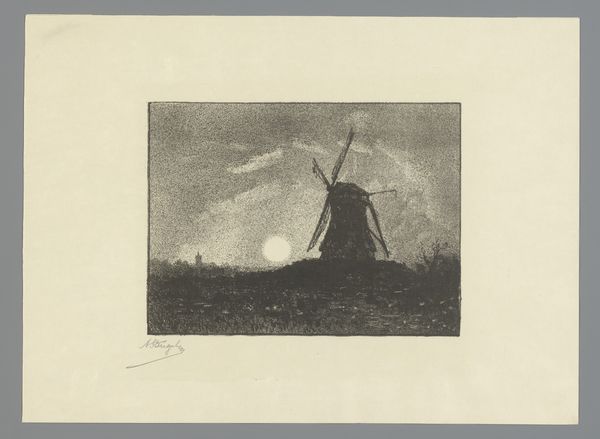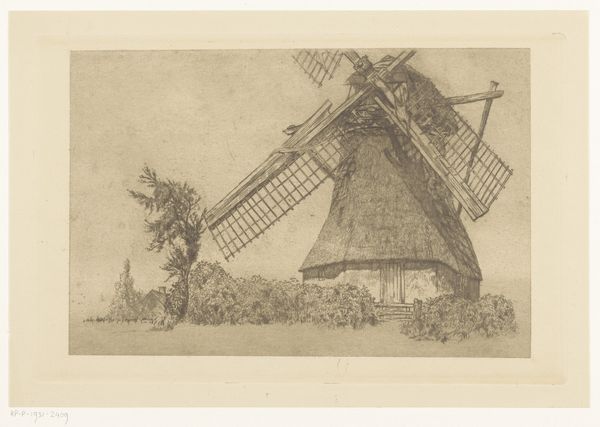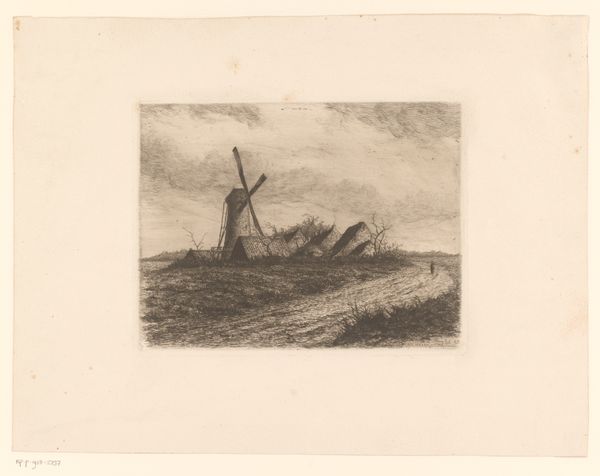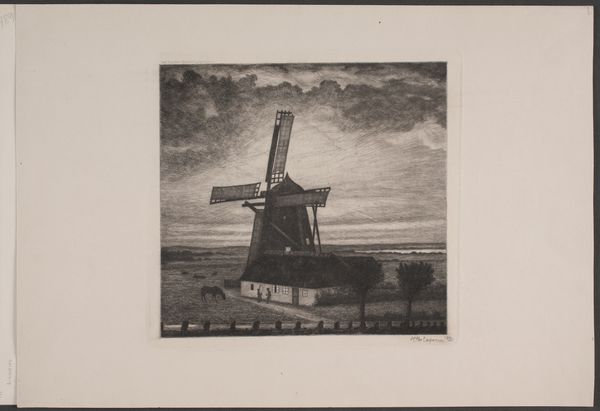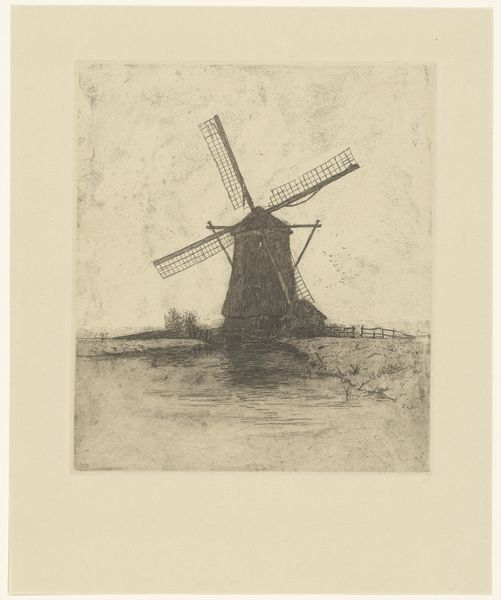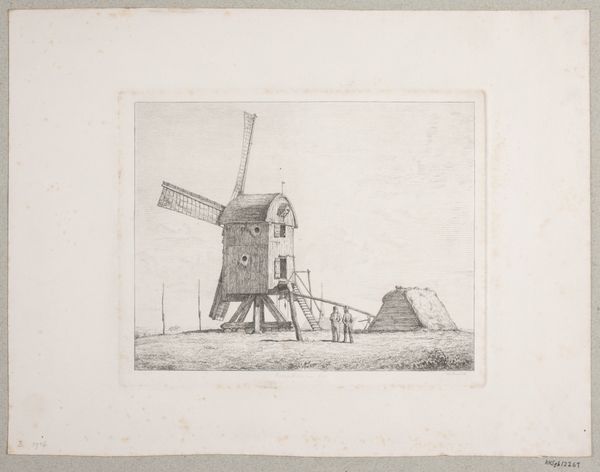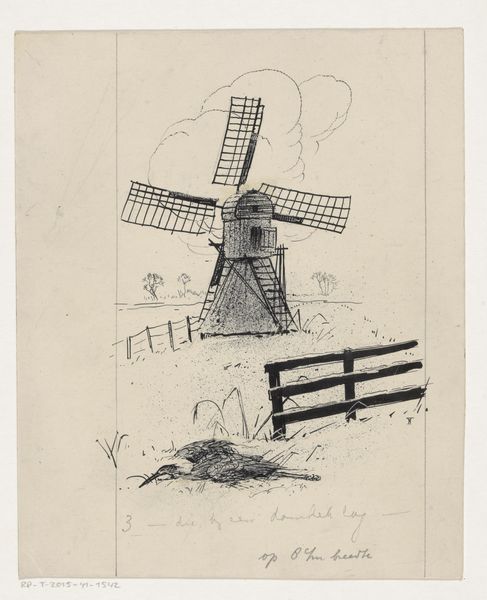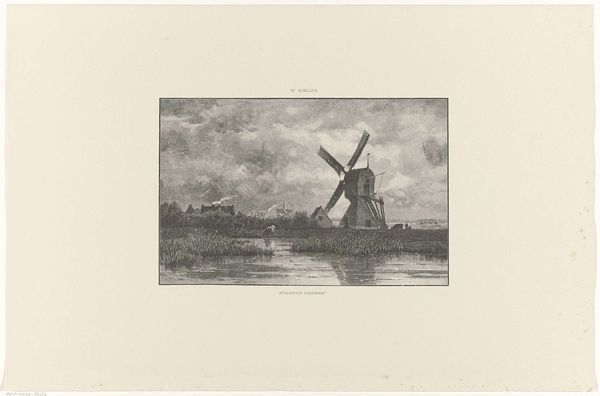
print, etching
# print
#
etching
#
old engraving style
#
landscape
#
personal sketchbook
#
realism
Dimensions: height 178 mm, width 238 mm
Copyright: Rijks Museum: Open Domain
Curator: So, here we have "Molen te Westerbork" by Alphonse Stengelin, likely created sometime between 1862 and 1913. It’s an etching, printed on paper. Editor: It's very somber, isn't it? The monochrome palette and sparse details create a quiet, almost melancholic atmosphere. The lone windmill seems to stand as a symbol of resilience. Curator: An etching like this would have involved coating a metal plate with wax, drawing through it to expose the metal, and then bathing the plate in acid. The varying line weights suggest he controlled the depth and duration of the acid bites carefully. Consider the labour involved! Editor: Indeed. But beyond the process, I see a stark visual statement about the rural landscape, a portrait of the Drenthe region of the Netherlands. You can feel the isolation, the almost brutal simplicity of life dictated by the land. Curator: Absolutely. Stengelin captures a distinct sense of place, even the slight imperfections and the handmade nature of the print enhances that feeling. Notice how the sky is almost untouched; the relative density of detail between the top and bottom give the effect that one is observing the mill from eye level, the atmospheric quality only adding to the naturalistic aesthetic. Editor: And the choice of subject too – the windmill, historically such an integral part of Dutch life. They symbolize more than just industrial might; it’s deeply intertwined with Dutch identity and history. In the age of industrial progress, this etching can be seen as something of a rural elegy. Curator: That's a fascinating read. Considering it comes from a period of profound industrial advancement, it is true the etching is evocative of tradition in a rapidly evolving social and technological landscape. I see not just the work itself, but the networks and materials—the ink, paper, press—that gave it form. Editor: The image evokes for me themes of human endeavor against the backdrop of nature, a statement on time, landscape, labor, and social changes. Its simplicity makes it remarkably evocative even today. Curator: A lot to unpack within a relatively simple landscape, then. I leave with a greater awareness of material constraints and social meanings around the subject, printmaking technology, and the impact of this convergence in time. Editor: Agreed; this image reminds me that art carries meaning both in its execution and its cultural fingerprint, so I’m prompted to reconsider art historical understanding with renewed intersectional vision.
Comments
No comments
Be the first to comment and join the conversation on the ultimate creative platform.
